Dacia Sandero vs VW T-Roc – erot ja hinnat vertailussa
Kustannukset ja kulutus
Hinta ja kulutus ovat tärkeimpiä ostopäätökseen vaikuttavia tekijöitä – ja juuri täällä erot usein korostuvat.
Dacia Sandero on hinnassa ratkaiseva edullisempi – sen lähtöhinta on 12500 €, kun taas VW T-Roc maksaa 30800 €. Ero on noin 18355 €.
Myös polttoaineenkulutuksessa näkyy ero: Dacia Sandero kuluttaa 5.30 L ja on siten tuskin havaittava taloudellisempi kuin VW T-Roc, jonka kulutus on 5.50 L. Ero on noin 0.20 L /100 km.
Moottori ja suorituskyky
Teho, vääntömomentti ja kiihtyvyys kertovat paljon auton ajotuntumasta. Tässä näkyy, kumpi tarjoaa enemmän ajamisen iloa.
Moottoritehossa VW T-Roc on ilmeinen etulyöntiasemassa – 150 hv verrattuna 110 hv:een. Ero on noin 40 hv hv.
Kiihdytyksessä 0–100 km/h VW T-Roc on pienessä määrin nopeampi – se saavuttaa 100 km/h ajassa 8.90 s, kun taas Dacia Sandero tarvitsee 10 s. Ero on noin 1.10 s sekuntia.
Huippunopeudessa VW T-Roc on pienessä määrin edellä – se yltää 212 km/h:een, kun taas Dacia Sandero saavuttaa 183 km/h. Ero on noin 29 km/h.
Myös vääntömomentissa näkyy ero: VW T-Roc vetää jonkin verran voimakkaammin, 250 Nm verrattuna 200 Nm:een. Eroa on noin 50 Nm.
Tila ja käytännöllisyys
Tehon ohella arjessa ratkaisevat mukavuus ja käytännöllisyys. Tässä selviää, kumpi auto on monipuolisempi ja tilavampi.
Istuimet: tarjoaa enemmän istumapaikkoja – vs. .
Omapainossa Dacia Sandero on selvästi havaittava kevyempi – 1089 kg verrattuna 1465 kg:een. Painoero on noin 376 kg.
Tavaratilan koossa VW T-Roc tarjoaa erottuva enemmän – 475 L verrattuna 328 L:een. Ero on noin 147 L.
Maksimikantavuudessa VW T-Roc pärjää pienessä määrin paremmin – jopa 1350 L, noin 242 L enemmän kuin Dacia Sandero.
Kantavuudessa VW T-Roc on jonkin verran parempi – 515 kg verrattuna 436 kg:een. Ero on noin 79 kg.
Kuka voittaa vertailun?
VW T-Roc osoittautuu olevan ratkaisee niukasti ja saa siksi tittelin DriveDuel Champion!
Tässä vertailussa VW T-Roc on monipuolisempi kokonaisuus.
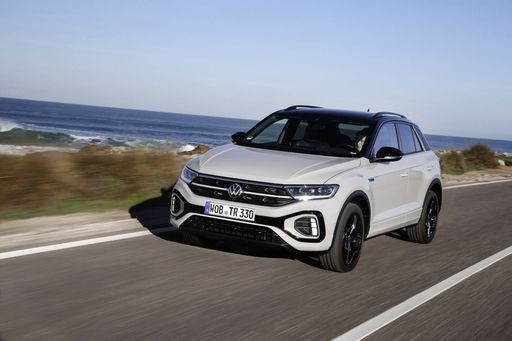 @ Volkswagen AG / VW Media
@ Volkswagen AG / VW Media
VW T-Roc
Kustannukset ja kulutus
Näytä yksityiskohtainen analyysi
Moottori ja suorituskyky
Näytä yksityiskohtainen analyysi
Mitat ja kori
Näytä yksityiskohtainen analyysi
Dacia Sandero
Dacia Sandero on fiksu valinta ostajalle, joka haluaa arkeen toimivan, edullisen ja käytännöllisen auton ilman turhaa luksusta. Se tarjoaa juuri sen, mitä tarvitset: reilusti tilaa, suoraviivaisen käytettävyyden ja vahvan hinta‑laatusuhteen — pieni hymähdys tulee vielä sen omaehtoisesta karismasta.
Tiedot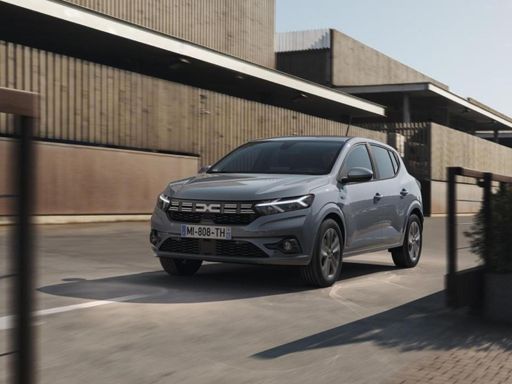 @ Dacia / Renault Group Media
@ Dacia / Renault Group Media
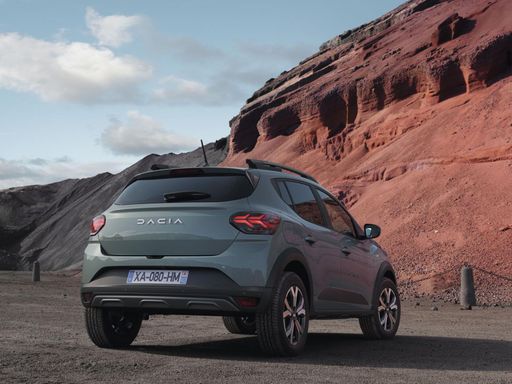 @ Dacia / Renault Group Media
@ Dacia / Renault Group Media
 @ Dacia / Renault Group Media
@ Dacia / Renault Group Media
VW T-Roc
T‑Roc on Volkswagenin kompakti katumaasturi, joka yhdistää sporttisen ilmeen ja arjen käytännöllisyyden. Se on ketterä kaupungissa, mukava pidemmilläkin matkoilla ja sopii niille, jotka haluavat tyylikkään perheauton ilman turhaa näyttämistä.
Tiedot @ Volkswagen AG / VW Media
@ Volkswagen AG / VW Media
 @ Volkswagen AG / VW Media
@ Volkswagen AG / VW Media
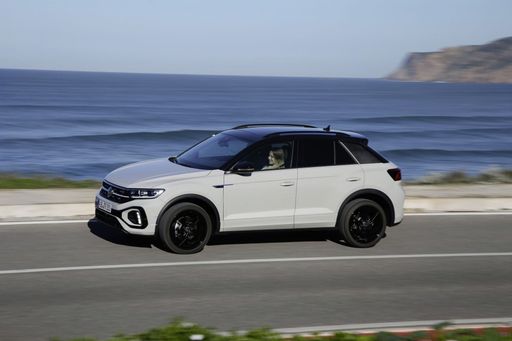 @ Volkswagen AG / VW Media
@ Volkswagen AG / VW Media
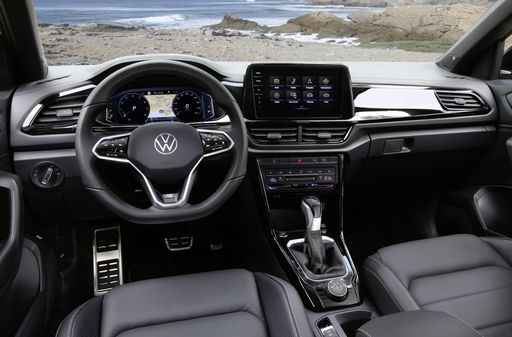 @ Volkswagen AG / VW Media
@ Volkswagen AG / VW Media
 @ Dacia / Renault Group Media
@ Dacia / Renault Group Media
|
 @ Volkswagen AG / VW Media
@ Volkswagen AG / VW Media
|
|
|
|
Kustannukset ja kulutus |
|
|---|---|
|
Hinta
12500 - 19500 €
|
Hinta
30800 - 44300 €
|
|
Kulutus L/100km
5.3 - 7.1 L
|
Kulutus L/100km
5.5 - 6.3 L
|
|
Kulutus kWh/100km
-
|
Kulutus kWh/100km
-
|
|
Sähköinen toimintasäde
-
|
Sähköinen toimintasäde
-
|
|
Akun kapasiteetti
-
|
Akun kapasiteetti
-
|
|
CO2
105 - 140 g/km
|
CO2
126 - 143 g/km
|
|
Polttoainesäiliön tilavuus
32 - 50 L
|
Polttoainesäiliön tilavuus
50 L
|
Mitat ja kori |
|
|---|---|
|
Kori
Hatchback
|
Kori
SUV
|
|
Istuimet
5
|
Istuimet
4 - 5
|
|
Ovet
5
|
Ovet
2 - 5
|
|
Omamassa
1089 - 1209 kg
|
Omamassa
1465 - 1539 kg
|
|
Tavaratila
328 L
|
Tavaratila
284 - 475 L
|
|
Pituus
4088 - 4099 mm
|
Pituus
4271 - 4373 mm
|
|
Leveys
1848 mm
|
Leveys
1811 - 1828 mm
|
|
Korkeus
1499 - 1535 mm
|
Korkeus
1527 - 1573 mm
|
|
Maksimi tavaratila
1108 L
|
Maksimi tavaratila
1350 L
|
|
Kantavuus
404 - 436 kg
|
Kantavuus
368 - 515 kg
|
Moottori ja suorituskyky |
|
|---|---|
|
Moottorityyppi
Bensiini, Kaasu (LPG)
|
Moottorityyppi
Bensiini, Bensiini MHEV
|
|
Vaihteisto
Manuel, Automaatti
|
Vaihteisto
Manuel, Automaatti
|
|
Vaihteiston tyyppi
Manuaalivaihteisto, CVT-vaihteisto
|
Vaihteiston tyyppi
Manuaalivaihteisto, Kaksoiskytkin automaatti
|
|
Vetotapa
Etuveto
|
Vetotapa
Etuveto
|
|
Teho hv
67 - 110 hv
|
Teho hv
115 - 150 hv
|
|
Kiihtyvyys 0-100 km/h
10 - 16.7 s
|
Kiihtyvyys 0-100 km/h
8.9 - 12.3 s
|
|
Huippunopeus
158 - 183 km/h
|
Huippunopeus
187 - 212 km/h
|
|
Vääntömomentti
95 - 200 Nm
|
Vääntömomentti
200 - 250 Nm
|
|
Sylinterien lukumäärä
3
|
Sylinterien lukumäärä
3 - 4
|
|
Teho kW
49 - 81 kW
|
Teho kW
85 - 110 kW
|
|
Iskutilavuus
999 cm3
|
Iskutilavuus
999 - 1498 cm3
|
Yleiset |
|
|---|---|
|
Mallivuosi
2024 - 2025
|
Mallivuosi
2024 - 2025
|
|
CO2-tehokkuusluokka
D, C, E
|
CO2-tehokkuusluokka
E, D
|
|
Merkki
Dacia
|
Merkki
VW
|
Millaisia voimalinjoja Dacia Sandero:ssa on saatavilla?
Dacia Sandero on saatavilla Etuveto-vetotavalla.
Näytetyt hinnat ja tiedot ovat arvioita, jotka perustuvat Saksan listahintoihin, ja voivat vaihdella maittain. Nämä tiedot eivät ole oikeudellisesti sitovia.
